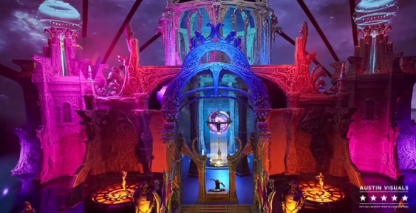
The Process Of Animation
The animation process starts with a storyboard. Before any animation can begin, the animators and director will discuss the storyboard. Before the characters are drawn, the actors and the dialogue are recorded. Rough sketches are made and often messy and have no background or color.
Texturing
Animators apply different textures to the surfaces of animated objects to give them more realism and appeal. Texturing is a vital part of the animation process, and 3D artists play a vital role in achieving these results. In addition to 3D textures, animators also use various tools and techniques to enhance the appearance of 3D characters. Read on to learn more about 3D texturing in animation.
All mediums have some sort of texture. Oil paint, pencil, and film all have some sort of texture. Texture adds meaning, feeling, and engagement to an image. Texturing is important to the overall look and feel of an animation. Without proper texturing, the animation can’t be believable. Instead, the viewer will be less likely to believe the piece of art. Therefore, it is crucial to make use of the right tools for the job.
One way to create realistic-looking surfaces is to use texture synthesis. These tools produce realistic looking textures, and can be very useful when creating 3D models. Texture synthesis is an important part of the process, as it creates a realistic environment for audiences and narratives. The work of artists goes a long way in helping animators create a beautiful world. In addition to using specialized tools for texturing, you can also learn from other experienced animators.
High Quality Effects
High-end VFX requires special technology and rules that are not common in games. As such, the amount of texture work done by each team member can vary greatly. Generally, however, texture artists are able to produce high-quality results without compromising quality. Some companies hire a texture artist to do the texturing, while others outsource the task to artists.
While aspiring texture artists are able to obtain a job as a 2d artist, experience is the key to becoming a 3D texture artist. Experience is often the best credential, but aspiring artists can still get valuable work experience through internships or entry-level positions. The more experience you have in the field, the better, but many employers prefer people who have a degree in the field. For those with no formal training, however, entry-level jobs may be available as a result of being self-taught or having a passion for 3D texturing.
Character Rigging
If you are interested in a career in character rigging, you can get the necessary training and experience through a few internships or other courses. These internships and courses typically involve a lot of hands-on training, so you will learn the basics of the industry as well as gain valuable industry connections. The next step is to find a job as a character rigger. You can find a job in this field by doing a search on different websites and using a search engine.
Riggers work on 3D models that have been designed by modelers. Riggers make the characters move by breaking down their motion into separate elements. Each of these elements will be given hundreds of control points that animators can use to create poses and animation. In addition to animating, character riggers may also work in software companies or in video game design studios.
The first step in rigging a character is to place the bones that will move the character. While this part of the process is easy, many bones will require additional work to make them animated. Character rigging usually involves Inverse Kinematics, which reverses the Forward Kinematics. Constraints will also be necessary, as they ensure a smooth animation process.
The Role of a Rigger
A job as a character rigger usually requires a bachelor’s degree. The role requires intensive training in the use of computer animation software. Riggers often work with highly specialized equipment, so it’s crucial to become knowledgeable about the software and rigging programs. Most of them are avid gamers. A person should also develop a substantial portfolio. Character rigging is a complex job, and you should have a good understanding of anatomy before you can apply for the job.
Once you have a model that matches the desired look and movement, you’ll need to start rigging the bones that make up your character. This process is a crucial part of the animation process. If you want your character to have a realistic and lifelike appearance, you need to animate it. A good rigger will be able to set the bones that determine its pose, and they will help you get the final result you want.
Character Skinning
After sculpting the model of a character, defining the controls for animation, and rigging, the final step of the animation process is skinning. As the character moves into the desired pose, an algorithm is called skinning that moves the vertices of the mesh in order to replicate the motion of the character.
A good skinning method should be predictable and have intuitive controls for the artist to align the animation with their original vision. Another desirable property is speed of evaluation, which speeds up the animation process. The animator wants to see the result of adjusting a rig parameter instantly. Especially in video games, this speed requirement is an absolute must. However, while it may seem complicated at first, it is the most efficient way to ensure the success of the final animation.
More Effective Methods
While there are many possible methods to achieve this, the main problem with all of them is that they’re not fast enough for interactive use. Fortunately, there are some solutions. One way to get a good result from skinning is to use a physics simulation technique that involves muscle deformations. The technique relies on a simplified physics simulation method to model muscle motion. This method guarantees volume conservation.
In a basic way, skinning entails dividing the character mesh into separate scalar fields, each of which represents a particular portion of the visual representation of the character. Then, the skin is assigned to one of these vertices. It can also be associated with several bones. The weights of each bone are known as vertex weights and blend weights. The resulting skin surface is adapted to the current animation pose.
Another way to achieve accurate skin deformation is to use an example-based skinning method. It aims to emulate the deformations of natural skin using a large database of physical models. The problem with example-based skinning is that it requires heavy manual labor. This method is slow, however, but it produces more realistic results. The final result is dependent on the number of poses in the database, and on the amount of capacity to create new key poses.
Rendering
After you have completed the 3D model, the next step is rendering. Rendering is a process in which the computer calculates the final result. It can take anywhere from a few seconds to a few days, depending on how complex the scene is. The finished animation will be saved as a video or sequence of images. One minute of animation contains 1440 frames.
Depending on the project, the software used, and the desired outcome, the process may involve several steps. The first step is to gather information on the intended audience, company goals, and appearance of the final image. This consultation includes decisions on camera angles, lighting, and other aspects. Rendering also includes decisions regarding camera angles and environment.
Depending on the software used, a render is either a photorealistic or non-photorealistic image. The process is commonly used in video games, animation, and simulations. Renderers can be stand-alone programs or integrated into a larger modeling package. Rendering software is a carefully engineered program that computes the inputs to create a two-dimensional image. This image can then be used in video games, simulations, and TV visual effects.
Other Meanings
While rendering is often associated with computer-generated animation, it can also refer to the process of generating final animated frames in traditional hand-drawn animation. When the final animation scene is complete, rendering then encodes the individual frames into output files for use in a movie. If it’s a 3D animation, rendering can also produce the final video.
Using a 3D rendering is often the preferred method for customizing a product. It’s a great tool for revealing flaws in design, saving time and money. In addition, the process can be time-consuming, but it saves money and effort for companies.




